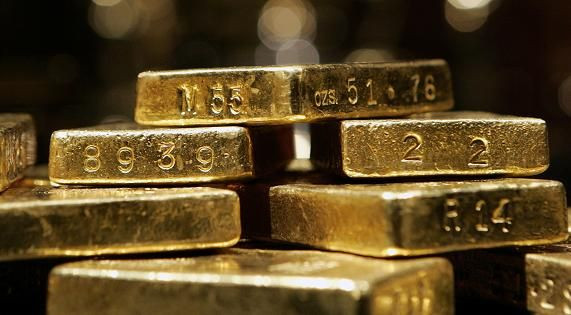Central Banks' Gold Buying At 50-Year Highs, Gold Price Climbing Toward $1,900/Oz In 2013: GFMS

Central banks last year added the most gold to reserves since 1964 and will likely remain an important force in the gold market in 2013. Supported by solid investment demand, the gold price is expected to climb toward $1,900 an ounce and average records in the first half of this year, according to Thomson Reuters GFMS.
In 2012, net official sector gold purchases totaled 536 metric tons, up 17.4 percent on the year, GFMS said Wednesday in a report. The world's central banks have been net buyers of gold since 2008. They are expected to buy another 280 tons in this year’s first half.
“With continued monetary loosening in advanced economies, demand for gold as a reserve asset from developing countries will remain strong in 2013,” the report, which was released Wednesday, said.
A growing number of emerging countries have increased their purchases of gold in recent years to bolster their rapidly growing currency reserves, as sovereign debt crises have weighed on traditional reserve currencies such as the U.S. dollar and the euro.
Nations from Brazil to Iraq to Russia are buying metal to add to official reserves.
National Bank of Ukraine (NBU) said in late December it raised the percentage of gold in its reserves in 2012 to 7.72 percent from 4.36 percent a year ago.
The bank said it is boosting its gold reserves “to avoid the negative impact of the global crisis on the economic development of the country as it … works on diversifying the components of international reserves in Ukraine.”
Meanwhile, Brazil doubled its gold holdings in two months last year, buying 17.2 metric tons in October and 14.7 metric tons in November.
According to data released late last month by the International Monetary Fund, Iraq bought gold during August-September, lifting its official precious metals reserves from 5.8 metric tons to 31.07 metric tons.
Bullion rose a 12th straight year in 2012 as central banks from Europe to China pledged more stimulus to bolster economic growth. Gold price rose more than threefold between 2007 and late 2011 -- from around $600 to a peak of $1,895.
“Although there is now growing speculation around the structure and longevity of the Fed’s QE program, policies of ultra-low interest rates across the Western economies will persist in 2013,” said Philip Klapwijk, global head of metals analytics at Thomson Reuters GFMS. “This will continue to support investor interest in gold in the absence of low-risk investments that can offer acceptable yields.”
Klapwijk anticipates gold to average an all-time high over the first half of 2013 and to recover back well into the $1,800s.
Gold for February delivery on the Comex division of the New York Mercantile Exchange was last down $3.40 at $1,680.60 an ounce.
Total investment slid in 2012 to 1,614 metric tons last year but will jump to 840 metric tons in the first half of this year, from 702 metric tons a year earlier, GFMS said.
Jewelry demand last year dropped 4.4 percent to a three-year low of 1,885 metric tons last year amid higher prices and import taxes in India. China’s jewelry fabrication fell less than 1 percent in 2012, the first annual drop in nine years. The researcher expects global jewelry demand to fall 4.2 percent to 891 metric tons in the six months through June.
Output rose 0.2 percent to a record 2,841.9 metric tons last year and first-half supply will climb 1.5 percent from a year earlier, GFMS said.
South African gold production slumped 11 percent to 179.8 metric tons last year due to labor unrest, while Peru’s output declined 2 percent to 184 metric tons, moving above South Africa to become the fifth-biggest miner, the report showed. The U.S. and Russia were the third- and fourth-biggest producers last year, after China and Australia.
In midday trading, the SPDR Gold Trust (NYSEARCA: GLD) and iShares Silver Trust (NYSEARCA: SLV) both increased less than 0.1 percent. Gold miners (NYSEARCA: GDX) such as Yamana Gold (NYSE:AUY) and Newmont Mining (NYSE:NEM), and Silver names such as First Majestic Silver (NYSE:AG) and Pan American Silver (NASDAQ:PAAS), traded in the red.
© Copyright IBTimes 2025. All rights reserved.






















